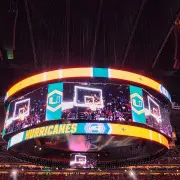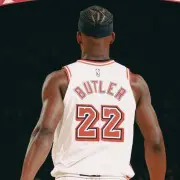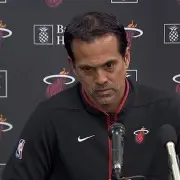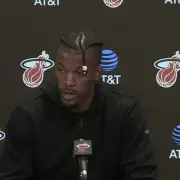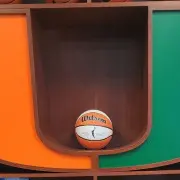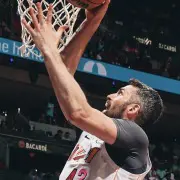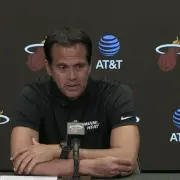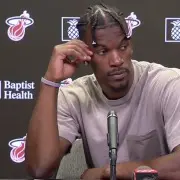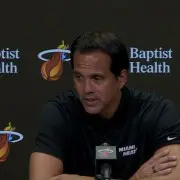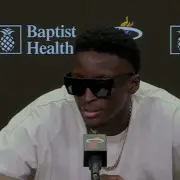Miami’s Magical March
“One Shining Moment” is ubiquitous in CBS’s coverage of the NCAA Tournament. The song plays out the tournament, recapping a month of memories, reliving the ups and downs, the humanity of sports.
For Miami’s Athletic Program, shining moments over the past 2 decades have been mere blips on the radar, drowned out by a cacophony of failures, false starts, and dejections. The 2 programs that dominated from the early 80s through the early 2000s, football and baseball, have not sniffed championships.
As March 2023 came around, those dyed in orange and green Canes fans that still stuck around did so more out of a sense of love and obligation versus an actual belief in ultimate victory.
And that sense of doom was only amplified by Norchad Omier’s injury against Duke and the Women’s team being sent to a site where they would have to beat a #1 seed on the road. There was very little indication that both the Men’s and Women’s teams would go on a 3-week journey that would reinvigorate the entire community.
Beautiful Symmetry
For some reason, I felt the Men’s team was special this year. They have been high seeds before, made Sweet 16s, but this felt more substantive. It’s abnormal for me to just follow the team around, but I made the decision to do just that several months ago. At the time I didn’t know it was going to take me to Albany to Kansas City to Houston. I just knew that I was going where the team went.
The Women’s team was a bit of a different prospect. For those that know me, you’ll know my affinity for that program and Coach Katie Meier. I briefly thought that about the logistics of bouncing back-and-forth between Albany and Bloomington before realizing it wasn’t really feasible.
And I considered going to Bloomington again late in the 2nd half when the Men looked like they were going to lose to Drake. And was happy I didn’t when the Women trailed by 17 to Oklahoma State.
But that is what made this run for both programs so fascinating. There was a symmetry to their paths.
-Men down 8 late in the 2nd half in their first game. Women down 17 at the half. Both won.
-Both then upset Indiana.
-Both then win a Sweet 16 game as the lower seed when no one really gave them a chance.
Miami, of all programs, was the last one with both the Men’s and Women’s team in the Elite Eight.
There were so many moments that will be indelibly etched on the minds of Canes’ fans, perhaps none more so than both teams traveling to the Sweet 16, leaving the Watsco Center, headed to different parts of the country, to carry The U forward.
The Finality of It All
One of the undervalued aspects of a deep tournament run is just how quickly the games run into each other. On any weekend, you have a day between games. No time to bask in victory, on to the next one. There is a constant state of peril. Whatever good you’ve done to get this far is erased when the next game starts.
And also that everyone that makes the NCAA Tournament, with the exception of 1 team, loses their last game. There is no happy ending. The taste of defeat will linger.
That’s how we were treated to the duality of emotions as the Men’s team clinched their first Final Four appearance with the Women’s team being eliminated at the Elite Eight, bloodied and battered, a few hours later.
That is sports, the extreme highs, and the extreme lows. It comes with the irrationality of sports viewing in general. To care so much about something that in the grand scheme of things should be irrelevant but in reality dictates a lot of the human emotional spirit.
It’s why several weeks of joy must necessarily end with Destiny Harden and Jordan Miller embracing their respective coaches, tears in their eyes, having left their schools and their programs in a much better place than they found them.
We watched the Canes collectively go 7-2 over a 3-week period, but the 2 came last, the 2 are remembered. The “what ifs” come into play.
Time Heals All Wounds
The symmetry for the Canes’ teams continued all the way through how they were eliminated, losing to the eventual champions while just not being able to score. Shots that normally fell didn’t. That’s probably the thing that left the most sour taste in the mouth of Canes Family, that they went out not playing their best games.
But as distance grows between the present and those losses, it’s easier to reflect on the journey, on the enormity of the accomplishment.
Miami, at its core, is a city of dreamers. We are enchanted with the what could be, with the conceptual, often at the expense of the reality.
It’s that audacity that has allowed a small, private school in Coral Gables to repeatedly achieve athletic excellence. We’re constantly told we can’t achieve, we don’t belong…and we don’t care.
The problem is that over the last decades, the doubters have been proven right. There is very little to show for the frustrated efforts at ascension to the top of college athletics. Miami has struggled to reclaim past glories.
And that is what the basketball programs collectively have restored. Our sense of pride in being Miami.
We can believe again. Believe in the dream of Miami. It’s no longer a pipe dream, a fanciful tale we tell ourselves to avoid the reality.
The reality is worth embracing.
I remember walking up to the stadium in Houston with a feeling I hadn’t felt in 20 years. Miami was playing in game with National Championship-level stakes.
Miami is back as an entity, as a dream, as a reality.
And we can thank the men and women of Canes basketball for the resurrection.
Vishnu Parasuraman is a journalist for @FiveReasonsSports. He covers the Miami Hurricanes for Sixth Ring Canes and Formula 1 for Hitting the Apex. You can follow him on twitter @vrp2003
